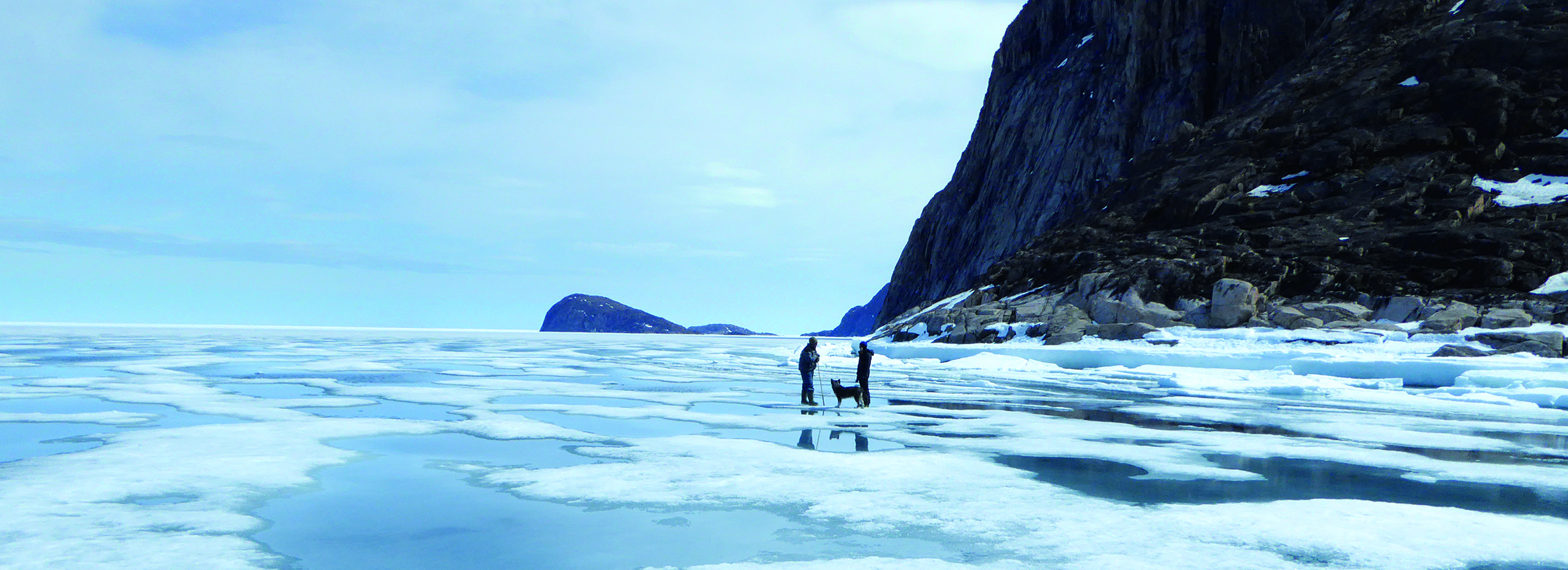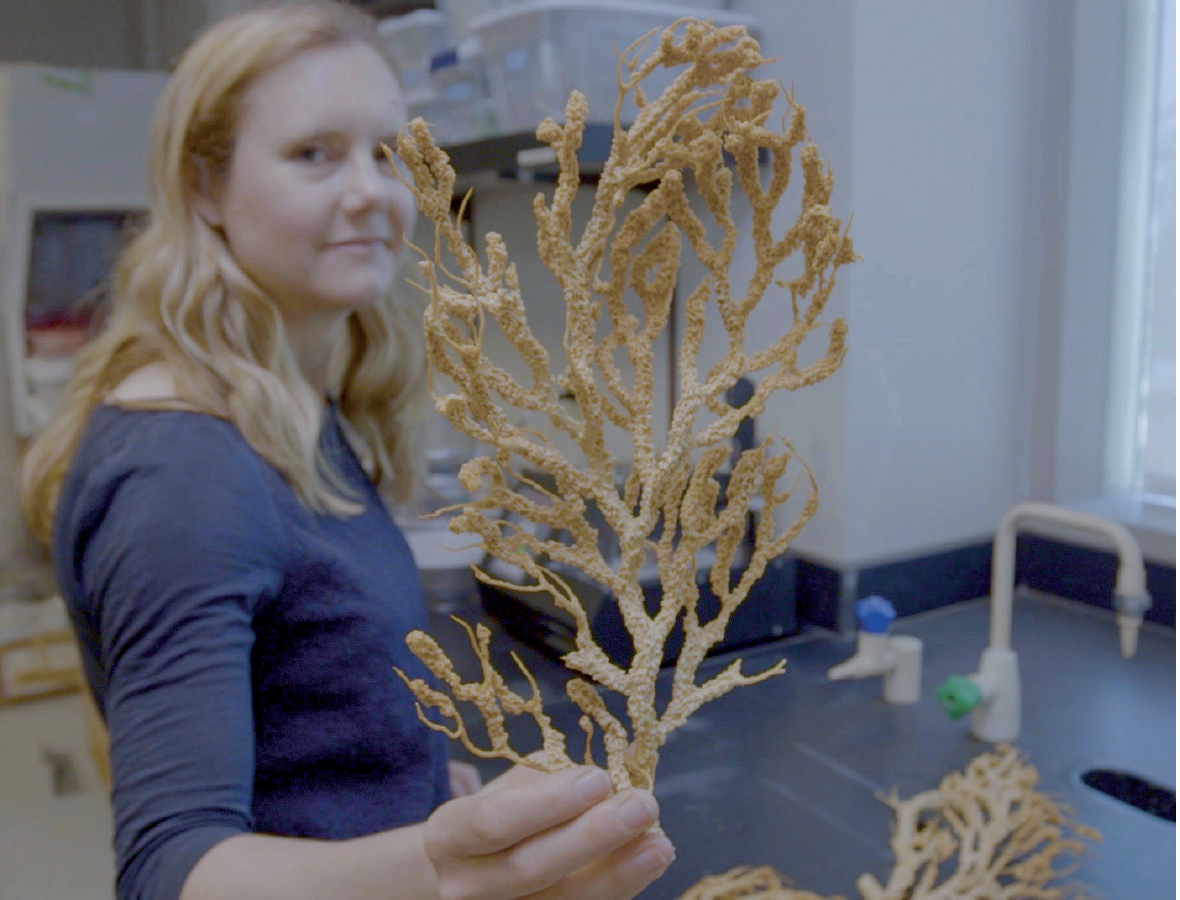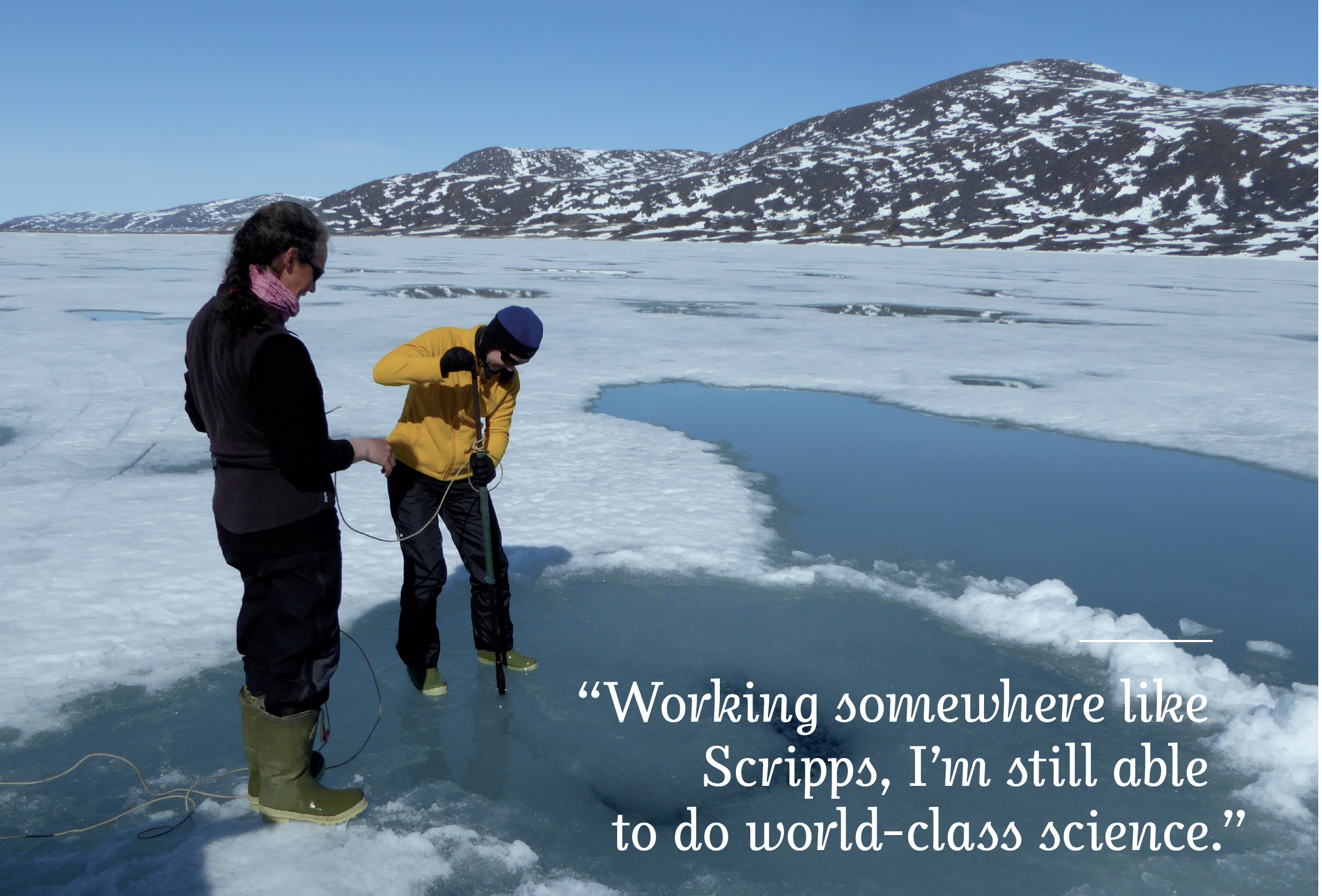By Rachel Morrison

Standing in the tide pools at El Matador Beach in Malibu, California, Branwen Williams, associate professor of environmental science at the W.M. Keck Science Department, looks out at the horizon as the sun descends over the Pacific. She is explaining to a film crew from National Geographic (Nat Geo) how red algae, which can be found in Southern California off of the Channel Islands, can be a reliable indicator of how oceanic temperatures are changing over time. An oceanographer by training, Williams explores natural and anthropogenic (human-caused) ocean and climate variability and the shifting pH levels of the ocean that result from manmade carbon entering marine environments by studying the chemistry of the skeletons of marine organisms.
The Nat Geo crew had been at Scripps the day prior gathering footage of Williams’s lab at the Keck Science Center for a segment of Explorer Academy: The Truth Behind, a science-based YouTube program for children ages 8 to 12 in which explorers seek answers to the unknown. But this wasn’t Nat Geo’s first time visiting Williams: since she garnered a grant from the National Geographic Society’s Committee for Research and Exploration in 2015, her work has been featured in print and on film by the organization several times, including in an episode of its Best Job Ever video series in 2016. “I do have a pretty cool job,” she says, “because I get to contribute to research that’s important, and I get to do it in conjunction with teaching those who will inherit the environmental legacy of the current generation.”

Photograph by Sam LeGrys/National Geographic
But Williams doesn’t just have one of the world’s coolest jobs. It’s also one of the world’s coldest.
In July 2015, she led a polar expedition to the hamlet of Qikiqtarjuaq in Nunavut, Canada, just north of the Arctic Circle. She was there to collect pink coralline algae, which, like the red algae she is exploring in Malibu, contains a cache of information about the water conditions of a given year. However, unlike the red algae, which is slimy and amorphous, what makes coralline algae a great barometer for changing oceanic conditions is its uniquely hard skeleton. Each year, the skeleton adds a single layer, similar to how a tree expands its trunk by growing a ring. Cut down a tree to look at the ring of a given year and you can tell whether or not there was a lot of rain based on the ring’s thickness. Measure the chemicals and pH in a layer of coralline algae and Williams can determine semi-annual changes to its marine environment.
“Only the top of [the skeleton] is living tissue, but it builds up this mass that’s been recording changes in the environment its entire life,” Williams told Smithsonian.com in 2017. For example, the algae concentrate more magnesium in their skeletons when the temperature is warmer and less when it’s colder. Another proxy for environmental change is growth rates: the greater the amount of light for the algae to photosynthesize, the higher the rate at which it will grow over a given period. And a greater degree of light available at the ocean floor signals a lesser amount of sea ice, which is an indicator of warmer temperatures
But if learning how to extract and interpret chemical properties from marine specimens seems challenging, actually getting to the Arctic Circle (one of the only places where the genus of coralline algae that Williams studies grows) to track them down is a truly formidable feat. “We had five flights total: we went from Los Angles to Toronto, then to Ottawa; from Ottawa to Iqaluit; then off to Pangnirtung; and finally, to Qikiqtarjuaq. It takes 20 hours of travel just to get to the site,” says Williams (who added that inclement weather delayed her flights home by four days, keeping her marooned in the Arctic).
Once they arrived, Williams and fellow researcher Jochen Halfar from the University of Toronto settled in with their hosts, an Inuit family that rents rooms in their home to visiting scientists, and stocked up on supplies from the co-op— a general store cum public square for the sparsely populated hamlet. To get to the sea ice, the researchers employed the help of a local guide, who led them on snow mobiles over the rapidly melting—and highly unpredictable—landscape. “Once we got to the place we were going to search for algae, we were jumping across sea ice with 400 meters of sub-zero water below us,” recalls Williams. The team was accompanied by large dogs at all times to warn of approaching polar bears.
A French scientist who was also conducting research in Qikiqtarjuaq at the time of Williams’s expedition would be diving for the algae samples in the glacial water. Risks of arctic diving, noted for its extreme hazards, include hypothermia, entrapment by moving ice, frostbite, and attacks by Arctic predators. Though the team arrived well prepared with a habitat model developed by Williams’s colleagues at the Smithsonian Institute and the University of Toronto to help them more easily locate the algae, “navigating the environment was slow going, because it was cold and we needed a lot of equipment,” recalls Williams. To mitigate risk to the diver, plunges were limited to 20 minutes at a time, meaning that the hunt for algae would take place in brief intervals restricted to small areas. And each new dive required the team to hand-drill a new hole through two to three feet of ice.”It was a lot of ‘hurry up and wait,'” Williams continues. “There were 24 hours of sunlight a day, which technically gave us a lot of time to work each day, but we had to move extremely slowly.”

“Working somewhere like Scripps, I’m still able to do world-class science.”
The team ultimately obtained algae specimens up to 50 years old that were flown back to the W.M. Keck Science Center for analysis. Using an inductively coupled plasma optical emission spectrometer funded by the NSF, the team analyzed magnesium and calcium in the skeletons, with Keck science student Tricia Light ’17 serving as first author on the paper that shared the study conclusions. They found that, when considered in tandem with 45 years of satellite data and data from coralline specimens up to 646 years old, magnesium and calcium levels suggested climate change. “We [were] seeing patterns consistent with unique or unprecedented environmental variability,” explains Williams. “When taken in conjunction with other studies, this suggests a change in response to greenhouse gas emissions.”
Since returning from the Arctic, Williams has had time to reflect on the parity of family, field research, and her role as an inhabitant of the planet her children will inherit. A Canadian national who has spent her fair share of time in the field (once for three weeks on a boat in the Pacific), travel comes easily to her. However, for Williams, it’s all about balance. “It was important for me to be there, to gain a full appreciation of the environment of our samples, and I have enough opportunities to keep my wanderlust satisfied,” she says. “But balance is required because of the CO2 emissions released by traveling, and because I like to be at home with my kids. Working somewhere like Scripps, I’m still able to do world-class science from my lab right here in Southern California.”

